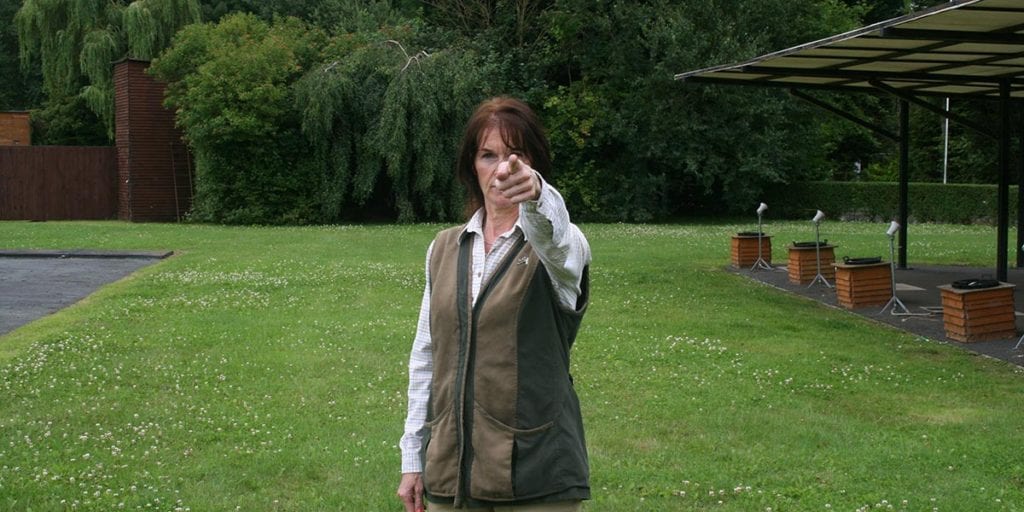BASC & The Deer Initiative
BASC And The Deer Initiative BASC is a founder member of the Deer Initiative (DI) and is proud to help ensure the delivery of a sustainable, well-managed wild deer population in England and Wales. The DI is

Why do I miss? I get asked this question a lot when I am coaching, and the answer can be a number of things. In this blog I will take you through the process of working out your eye dominance and you never know; it might be the answer you are looking for.
Every lesson on a BASC coaching line begins with eye dominance. It doesn’t matter whether you are a beginner or a seasoned shot, it is always a good thing to start with.
But, why do we start with eye dominance? Think about when you are going to take a shot, a series of learnt and instinctive behaviour follows after target acquisition.
Instinctively your arms raise the shotgun, your legs stabilise and your stock comes up to your cheek. Then, your thumb takes the safety off while your finger finds its way to the trigger.
Meanwhile, your brain is carrying out a risk assessment for potential safety issues and reasons not to pull the trigger. Finally, you assess the lead before pulling the trigger, keeping the gun moving. The rest of the shooting process is learnt behaviour and experience.

Evidence suggests eye dominance cannot be changed but it may alter over time. If we know which eye is dominant, then we can take potential issues out of the equation.
If it moves each time you have tried it, even if only a little, you probably have central vision.
If you are right eye dominant and shoot right-handed, then you don’t need to do anything. You can shoot with both eyes open plus; you will have peripheral vision.
However, if you did the test and you are right-handed but found you are left eye dominant, this will highlight how off target you would have been if this was a moving target. The simple fix here is to close your dominant left eye. This makes the right eye the master eye that aligns over the rib.
If you have central vision, you will also find a benefit to closing the eye that is not above the rib of the shotgun.
In summary, if you are shooting with both eyes open it is very important that the eye over the rib is in charge of where the gun is being pointed. So, if you are shooting from your right shoulder it would be your right eye and vice versa.
Anything other than a dominant eye above the rib of the barrel is going to mean you are pointing in a slightly different place than where you meant to.
Let’s hope it’s not too long before you can put what you have learned here into practice.
If eye dominance was not your issue and you would like some one-to-one coaching, come and visit our coaching lines.
BASC’s friendly and professional coaches provide the opportunity for newcomers wanting to try shotgun shooting for the first time. More experienced shots are also welcome.
Click here if you would like to know more about BASC shotgun coaching.
Eye Dominance is a phenomenon that affects many people from birth or can appear over time, especially with the onset of middle age, tiredness, variations in light and a variety of other factors. The effect is often not identified by shooters – or indeed coaches. The impact on shooting effectively, even at short range, is dramatic and even more so at long-range targets.
That impact is not always recognised. How many syndicate members drop out or give up shooting through frustration at not being able to hit or cleanly kill quarry despite it being ‘an easy shot’ and having the skills and resources to do so?
A real inhibitor to effective shooting is the fact that your friends, fellow shooters or relatives do not know they have a cross-dominant eye. Even if they did not have a dominance problem before, remember it can be acquired, especially as we get older. Once identified it can be easy to correct.
BASC And The Deer Initiative BASC is a founder member of the Deer Initiative (DI) and is proud to help ensure the delivery of a sustainable, well-managed wild deer population in England and Wales. The DI is
Coastal Access Coastal Access England Implementation of the England Coastal Path is now well underway. Natural England, the government agency responsible, expects to complete work on the England Coast Path in 2020. Current progress can
Woodland Trees and Shrubs The woodland trees and shrubs are the most important aspect of your land, says Charles Dutton. Whether your shoot’s a large commercial operation or a DIY shoot, what do you think
